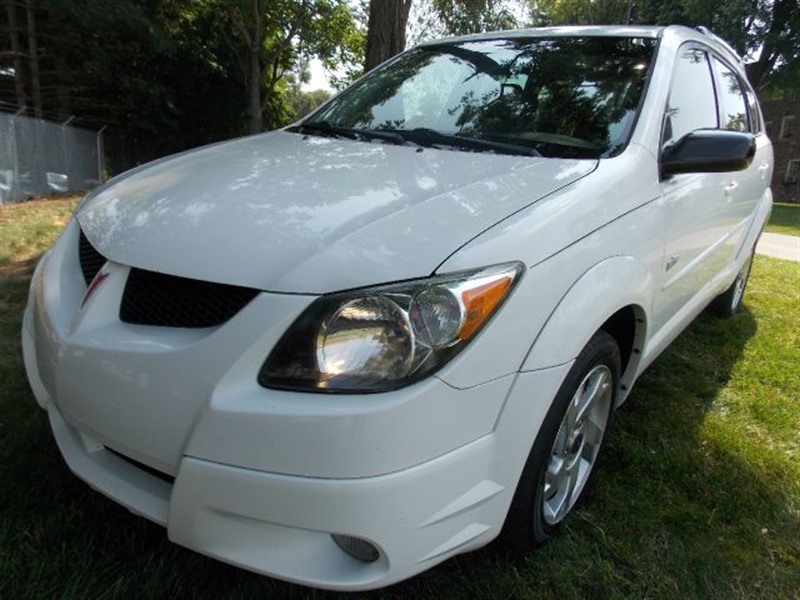
On the whole, the interior is pretty tacky looking, especially the fake brushed chrome trim. Towing capacity (I shudder) is listed at 1,500 pounds. With the rear seats down, cargo capacity is 54 c.f. Not only is there enough room for two average-size folks on the rear seat, there’s 19 cubic feet of gear room aft. The Vibe is a little shorter than a Honda Civic sedan, but gets to be a midsize because its interior volume is a fooler: 111 cubic feet. Both the rear pair and the co-pilot’s fold down nearly flat. Seats were fair, with insufficient lumbar support and not much wraparound grip. The GT is upgraded to disc brakes in the rear, and they seemed up to the task of stopping this relatively trim car, even in repeated “panic” stops from 70. Surprisingly, though the GT has a “sport tuned” suspension, its ride is for the most part quite acceptable. The steering is quick and light, and the suspension – MacPherson struts front, torsion beam with trailing link in the rear – is something of an overachiever, given its rather primitive design. (Z means the tire can run all day at 149 mph and more.) But it sure makes a nice talking point when the guys and gals check out your ride. I think they may have gone a little wild specifying a Z rating. If you get the summer tires, better have a set of winter tires, too, if you must drive on icy or snowy streets. The grip on dry pavement was ferocious on a snowy road, atrocious. You can get what the tester had, 17-inchers, with 215/50 summer Dunlops. The standard wheels on the GT are 16-inchers, good enough. The GT weighs 2,800 pounds, and sits on an impressive amount of rubber. EPA ratings are 25 mpg city, 30 highway, and despite flying it as if it were an aircraft, I got a respectable 27.4. Offsetting the taste for high octane is the engine’s relatively thrifty use of it. I wouldn’t think of running it on anything below 91 octane, and I’d give serious consideration to using synthetic oil, too. Needless to say, this mill will appreciate the highest octane you can find. They’re not all that long-legged, given the final drive ratio of 4.53:1. Both fifth and six are overdrive ratios, to let the engine rest a bit once you’ve achieved cruising speed. The other gears are spread so as to be useful at a variety of engine speeds. Having six forward gears of course confers a certain panache, though here, with such a peaky powerplant, it allows enough torque multiplication in first and second to make the most of what torque’s available in the boring, sub-5,000 range. But if you drive in a fashion designed to make the car outlast the warranty, you’ll have to become quite proficient at feathering the clutch. The best thing they do here is conduct a whole lot of fuel and air through the combustion chambers when the tach passes the 6,000 mark.Ībsent traction control, you could rev up the engine and drop the clutch for a speedy getaway. Well, when you’re getting 100 hp per liter, there’s only so much the valve trickery can do. Normally, this makes for a smooth surge of power from just off idle that continues with perhaps a slight bump at the upper reaches of the tachometer. It’s programmed to change when the valves open and how much they open. Toyota, like archrival Honda, has a variable-valve setup it calls intelligent. A lot of engines would have blown up before reaching even the latter figure. The actual numbers for output are 180 hp at a lofty 7,600 rpm, and 130 foot-pounds of torque at 6,800. Obviously it’s only for those who want to be deeply involved in the process of driving and can live, day in and day out, with a spirited thoroughbred. As much as I enjoyed the base Matrix, this one is a quantum leap in fun.
2004 pontiac vibe manual#
The GT comes with a six-speed manual transmission. It’s not necessary to smoke the front skins, though it’s in character. Since it’s front-wheel-drive, you could spend your time down at the House of Grease laying rubber in their parking lot.

Whereas the base model zips around in lively fashion with its 130-hp engine and front-wheel drive, the GT has the same all-aluminum engine, but, blessed with a sky-high 11.5:1 compression ratio and Toyota’s tricky variable-valve system, it churns out 180 hp. The two companies share the output of their jointly-owned plant in Fremont, Calif.

Yep, the only car in Pontiac’s present lineup that has anything going for it is a Toyota design. What that means is I tried out its sister ship, the Toyota Matrix.

2004 pontiac vibe series#
I had requested the GT, because I had sort of tested the base series before. It comes in a number of forms, base, base with all-wheel drive and GT. I guess you could call it a bit of all those things, though to my eye and sensibilities, “crossover” works pretty well, because of its vagueness. A sports car? A sport-utility vehicle? A crossover wagon? Or, as the poets at the Environmental Protection Agency say on its sticker, a “midsize”?


 0 kommentar(er)
0 kommentar(er)
